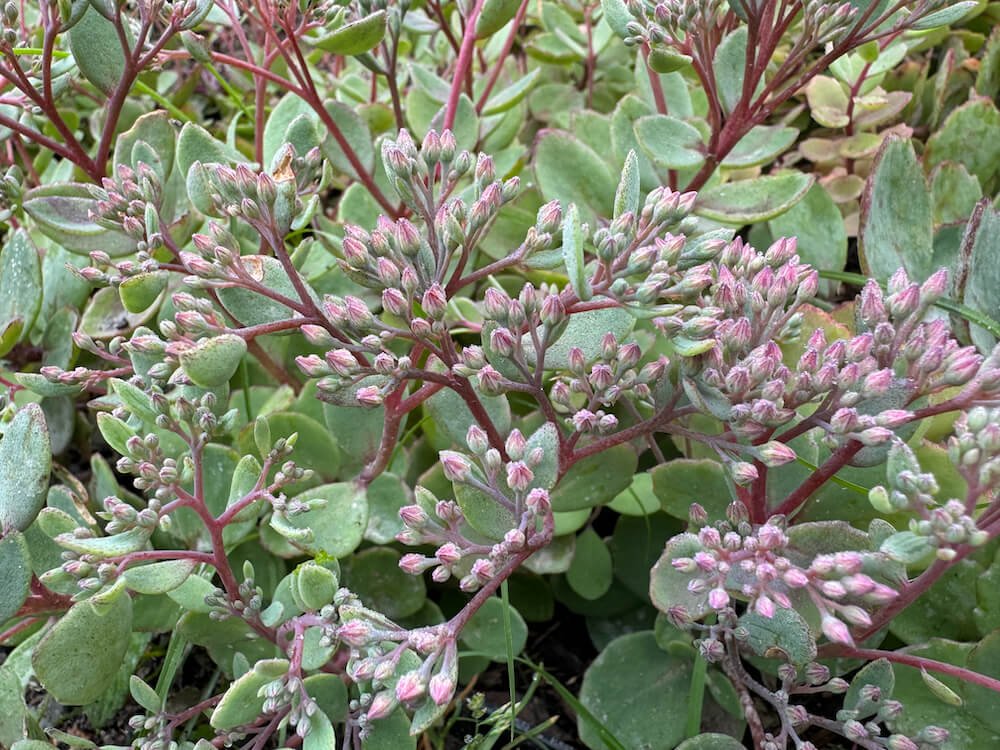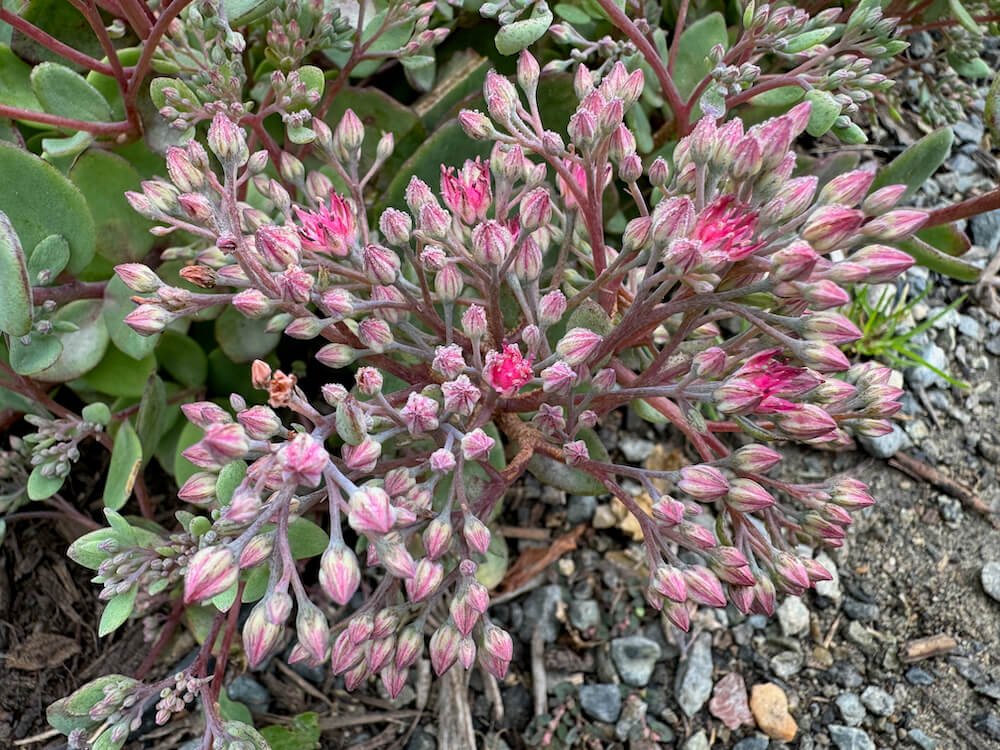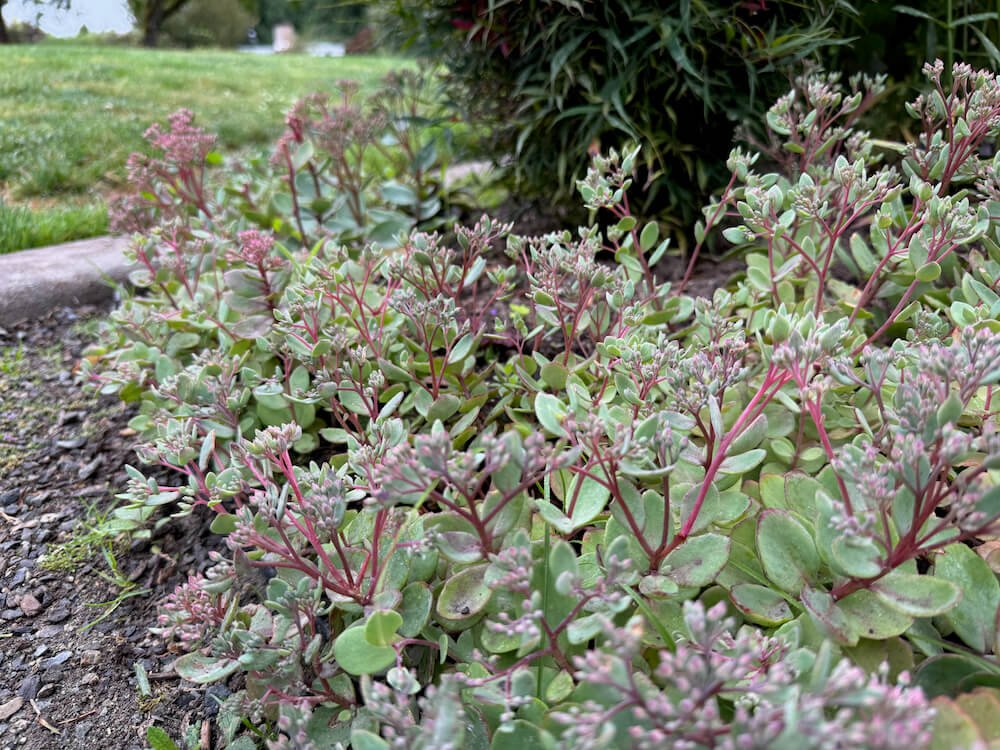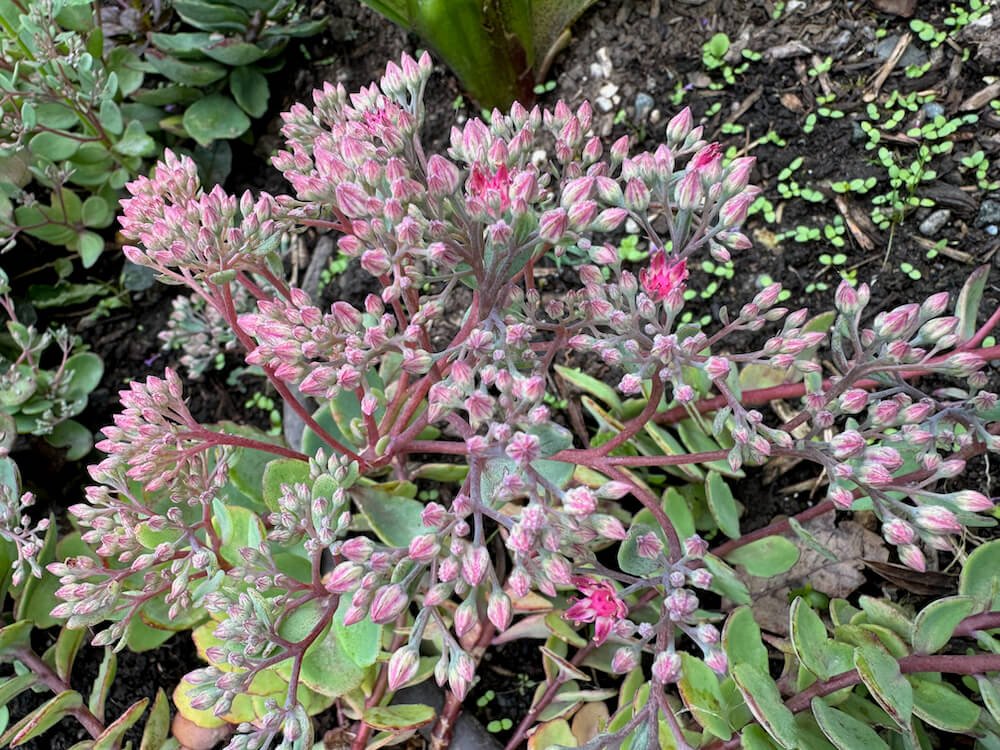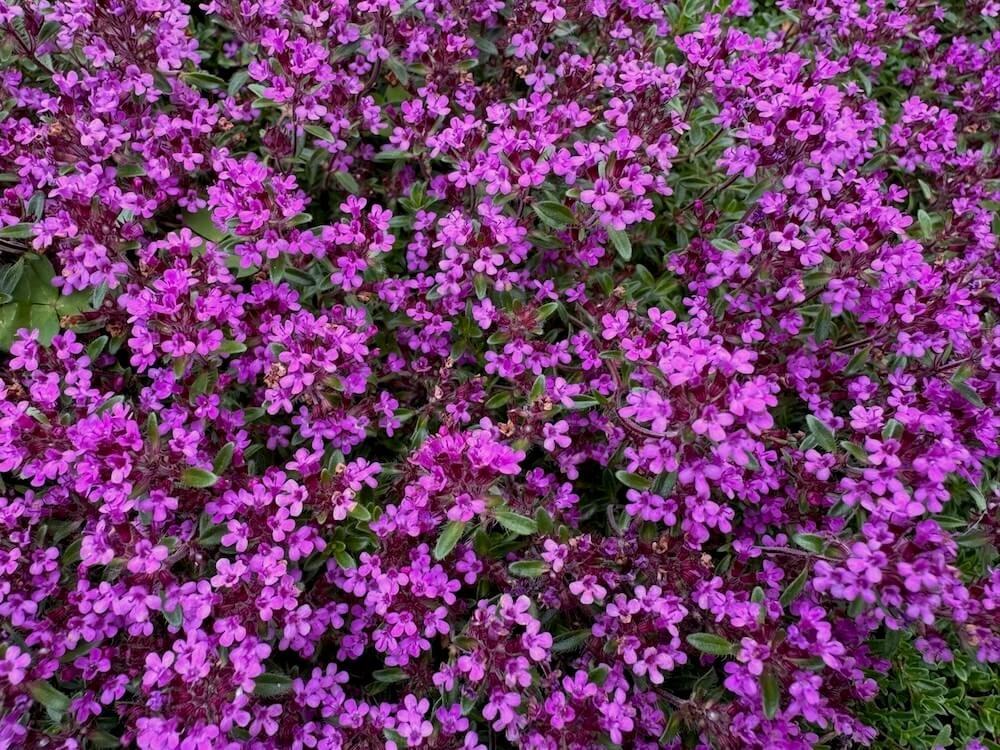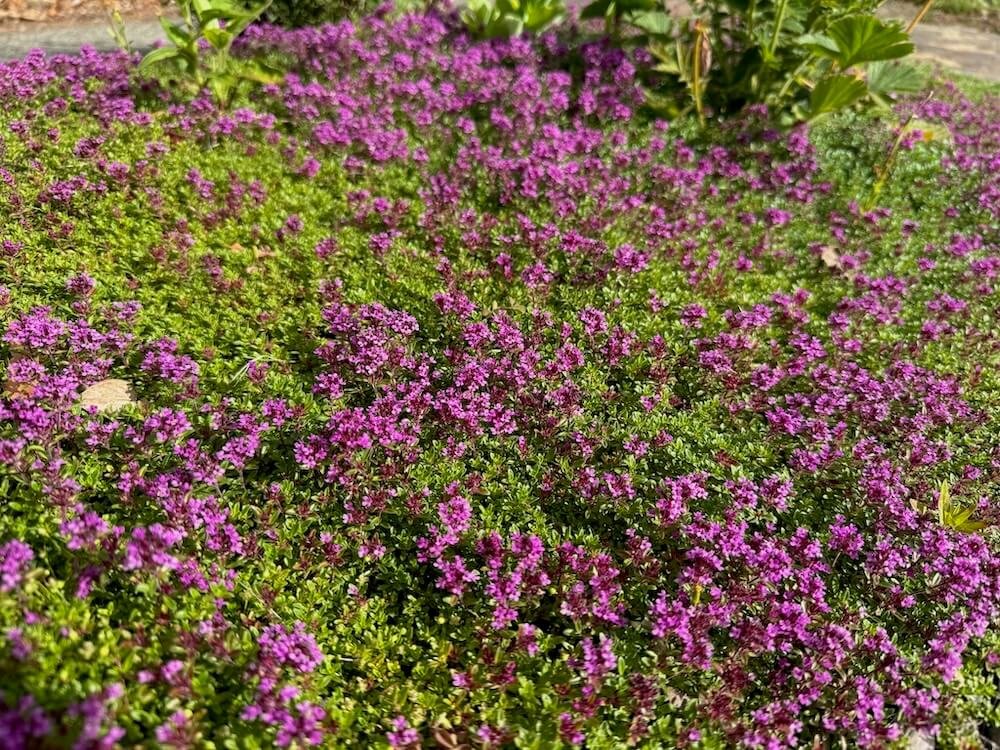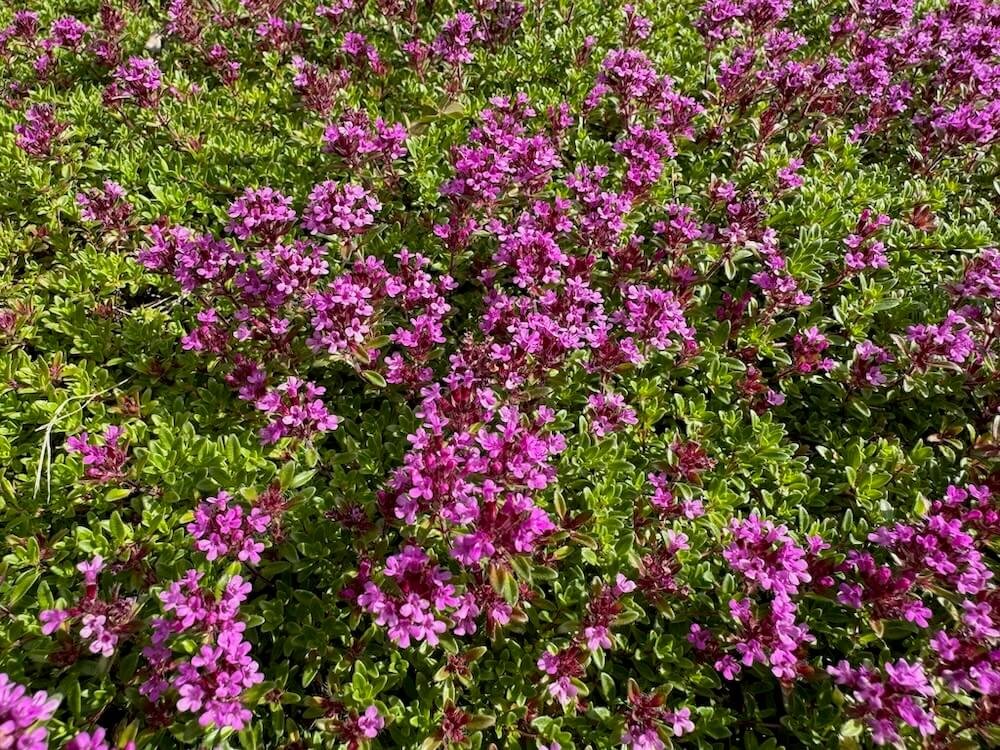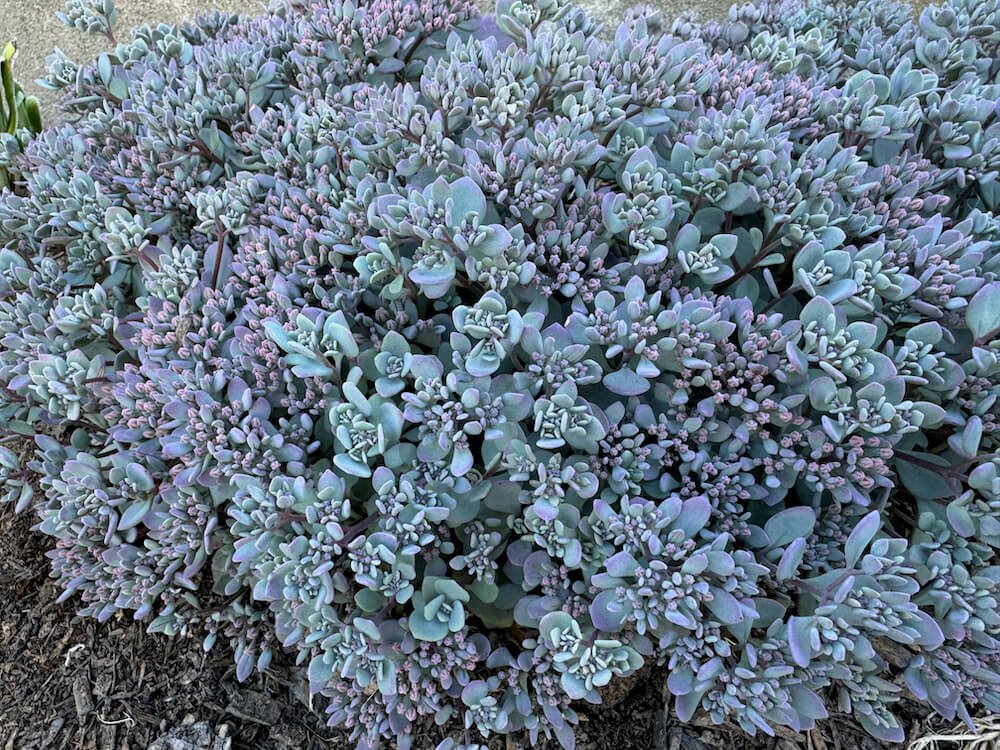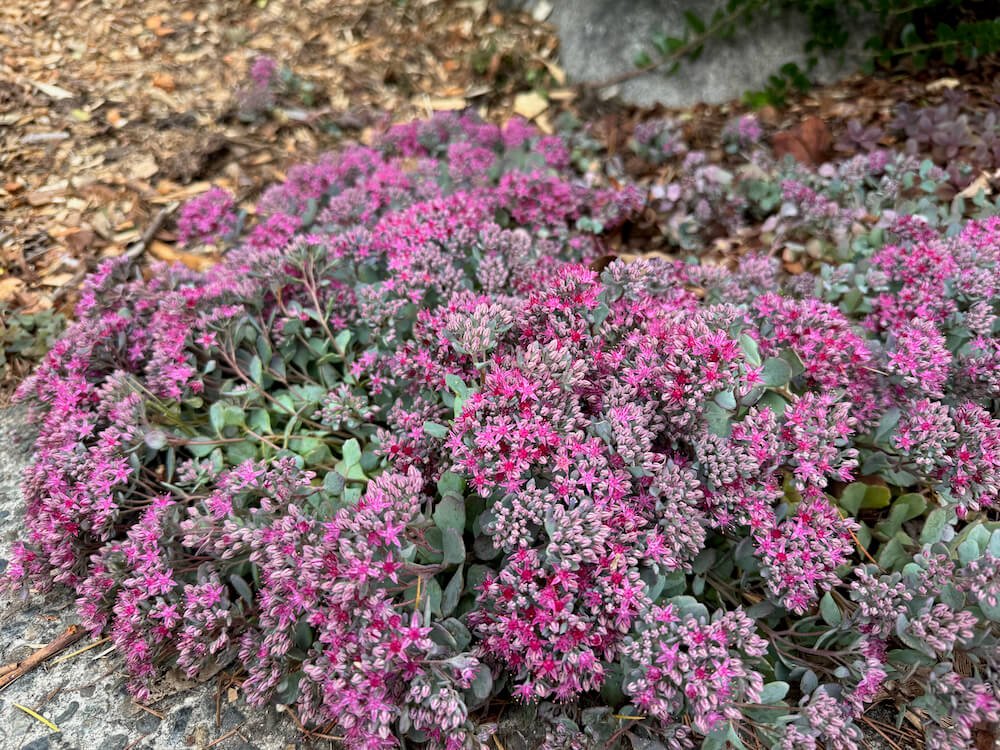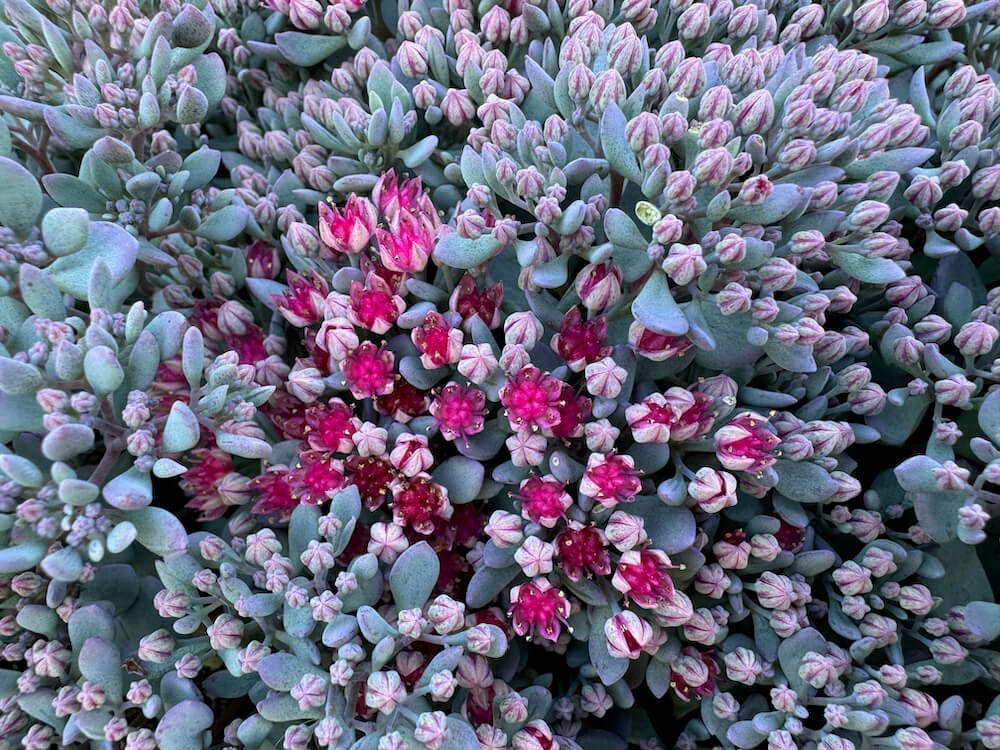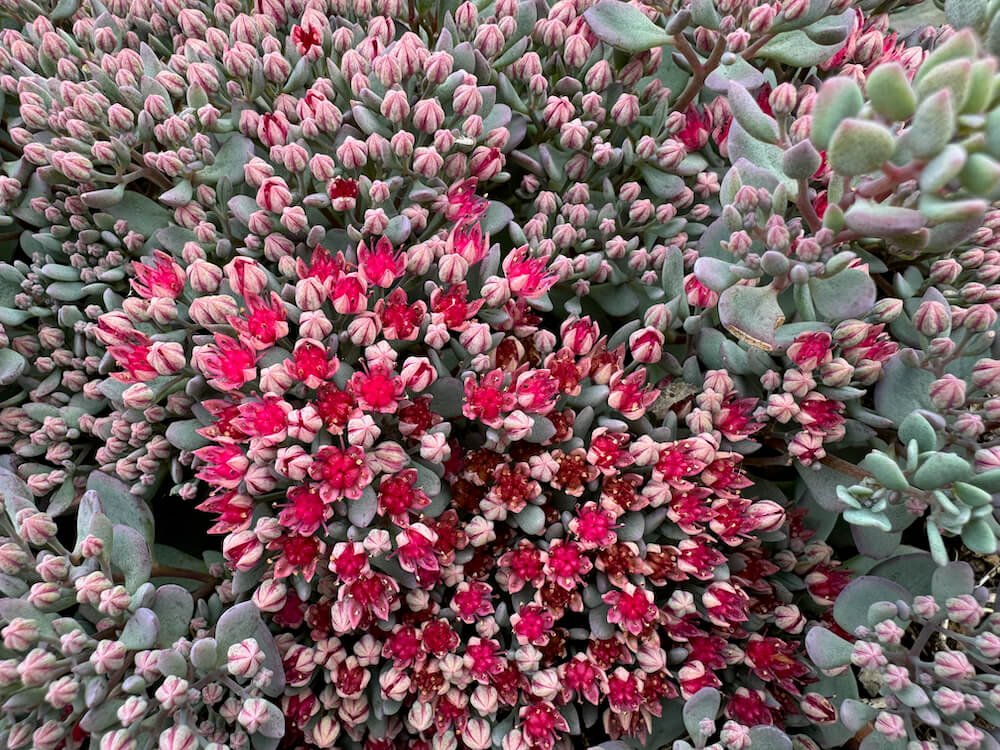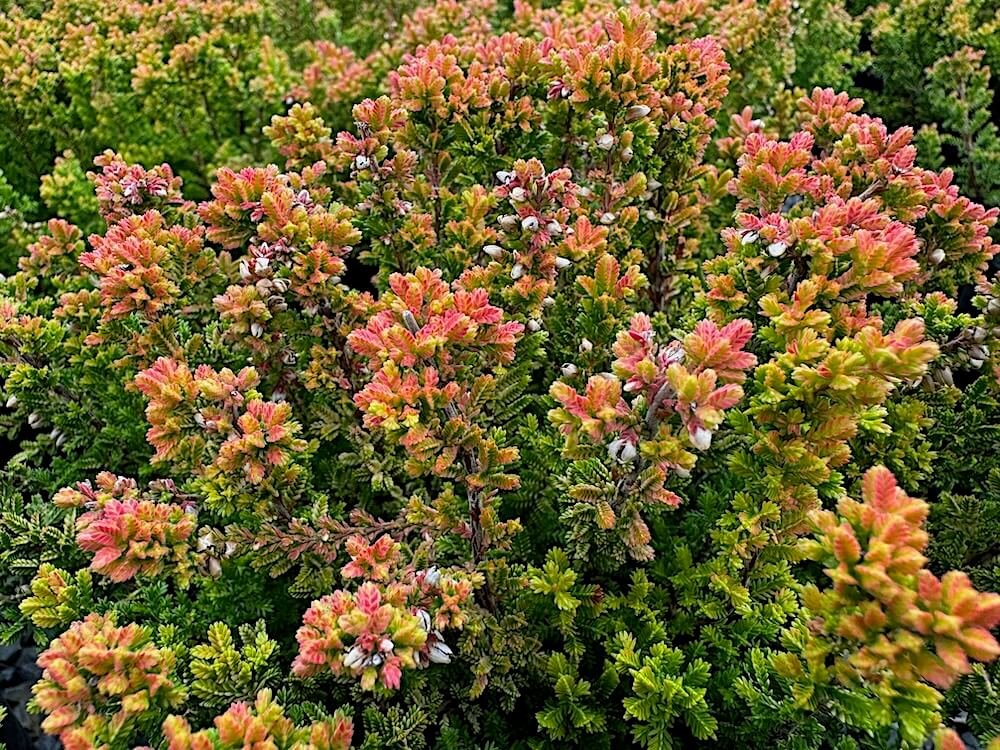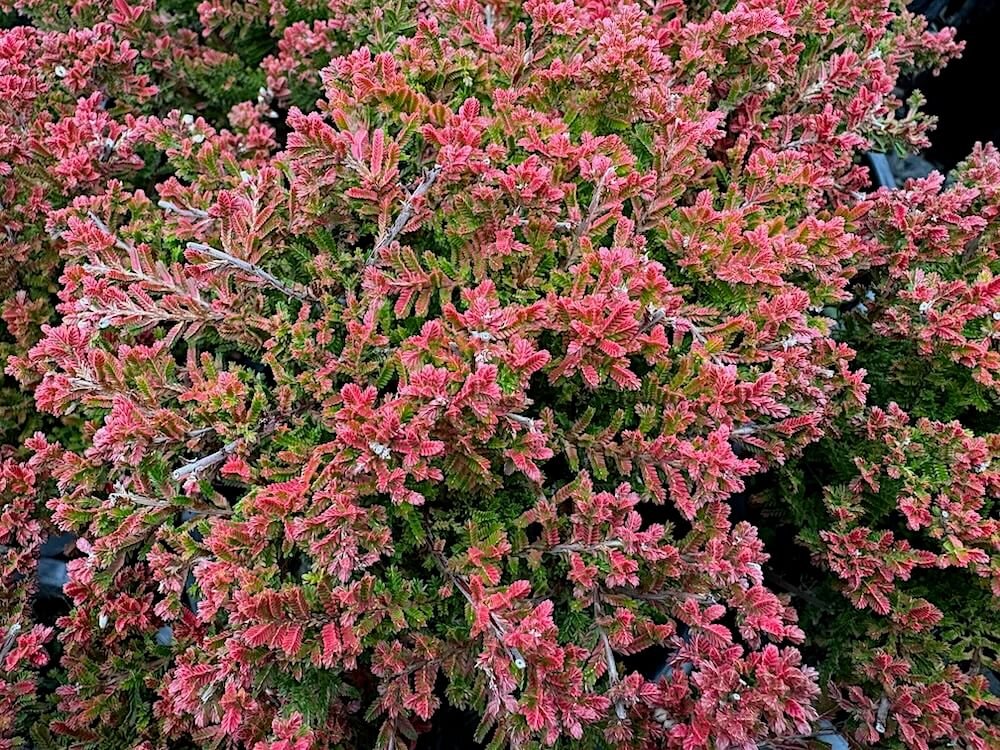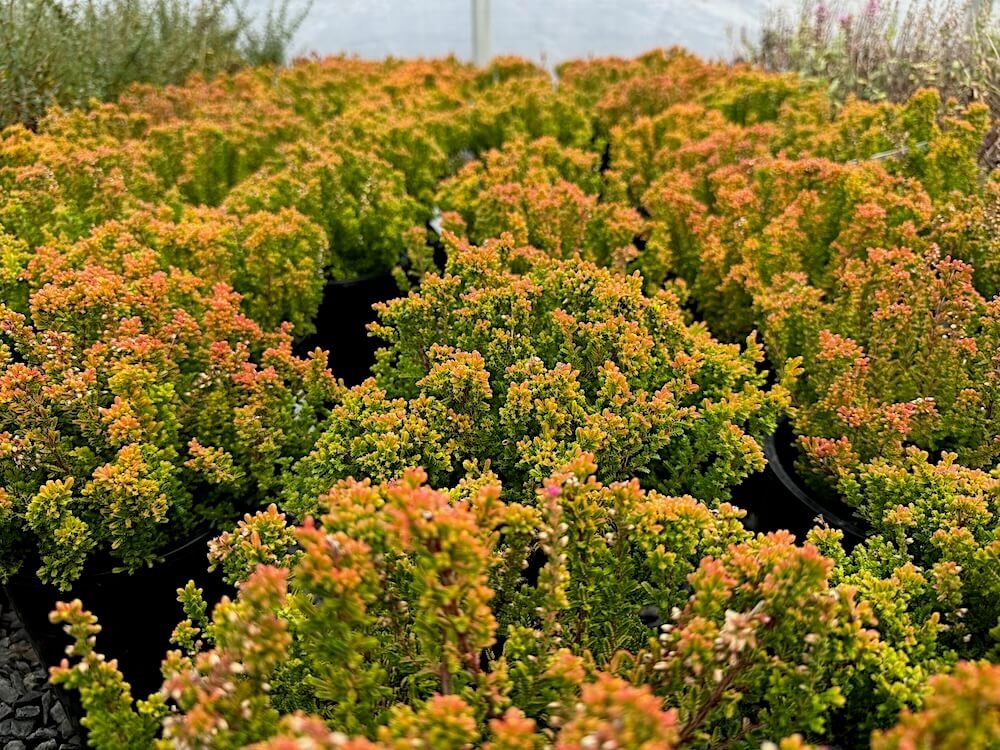DESCRIPTION
Hylotelephium 'Dazzleberry' is a striking, mat-forming succulent with smoky blue-gray foliage that contrasts beautifully with its vibrant magenta-pink flowers. The dense clusters of star-shaped blooms appear in late summer, creating a bold display that attracts pollinators like bees and butterflies. Its foliage also takes on purple hues in cooler weather, adding seasonal interest. This hybrid cultivar was bred for its exceptional color and compact form, making it a popular choice for rock gardens, containers, and borders.
DESCRIPTION
Hylotelephium 'Dazzleberry' is a striking, mat-forming succulent with smoky blue-gray foliage that contrasts beautifully with its vibrant magenta-pink flowers. The dense clusters of star-shaped blooms appear in late summer, creating a bold display that attracts pollinators like bees and butterflies. Its foliage also takes on purple hues in cooler weather, adding seasonal interest. This hybrid cultivar was bred for its exceptional color and compact form, making it a popular choice for rock gardens, containers, and borders.

